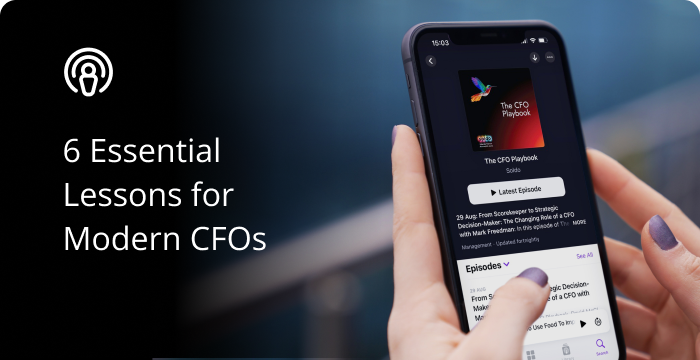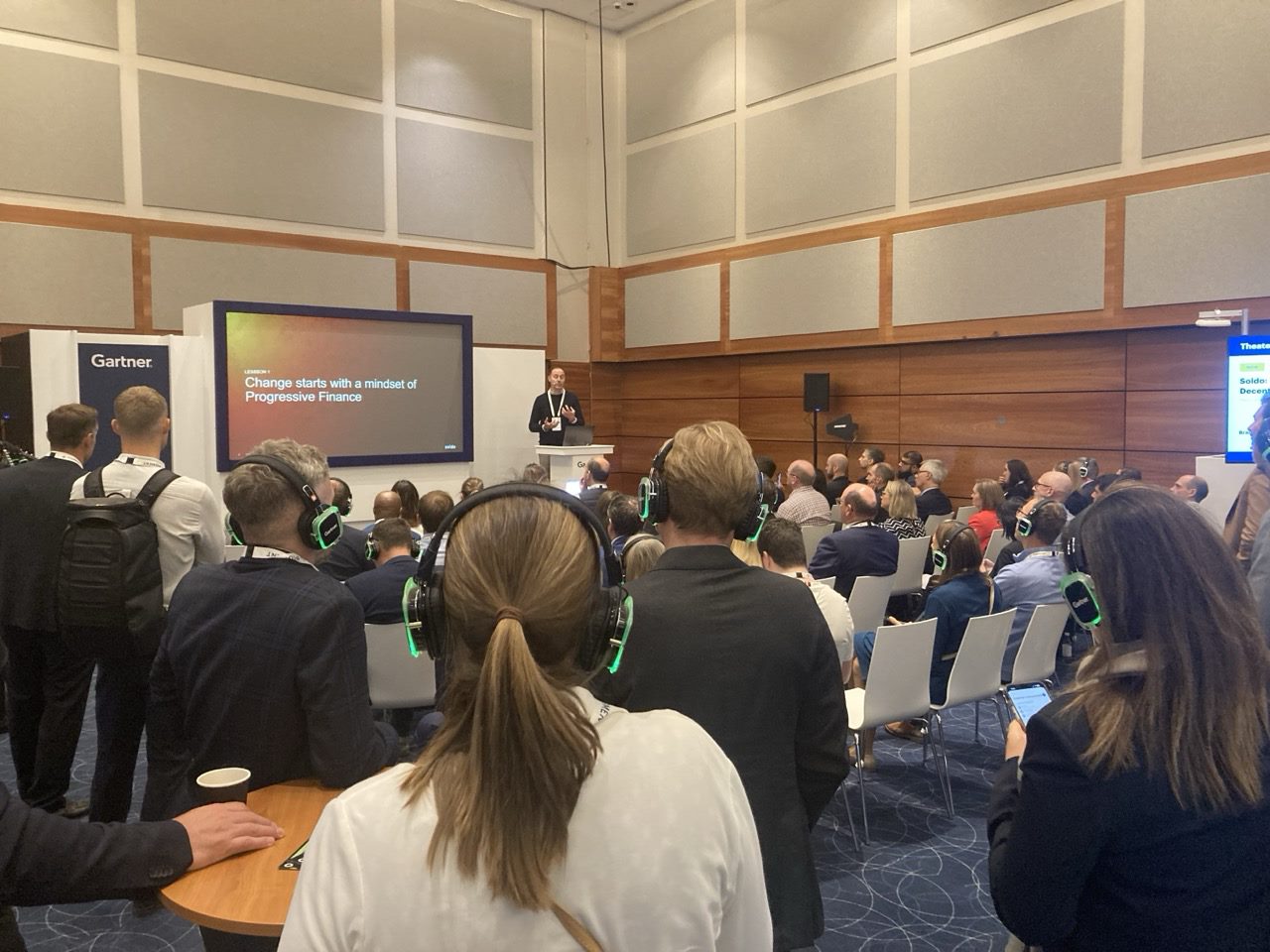This interview is part of prepaid cards for business provider Soldo’s Digital Disruptors series, which highlights the individuals changing the world with technology.
An interview with Paul Bulpitt.
The problem with the technology a lot of business owners and finance directors use is that it isn’t connected. Many use spreadsheets for accounting, create invoices using a word processor and manually key in their electronic banking. But all of this can be made much more efficient simply through automation.
As the co-founder of leading UK accountancy firm The Wow Company and the head of accounting at Xero, Paul Bulpitt finds this frustrating. We caught up with him the day after Xero had released “Small Business Insights”, a report which revealed small businesses are paid late by their clients 52% of the time.
So over 50% of small businesses’ invoices are paid late. How can they stop this from happening?
Research we did about 18 months ago suggested businesses were paid, on average, ten days late.
If you know this is likely and your client is willing, you can adjust your terms so that settlement is due earlier. So if you’ve agreed to 20 days rather than your usual 30, they might pay 10 days late but you’ll still get your money when you need it.
A lot of people put 30 days on their invoices because they assume it’s normal. You don’t have to stick to those terms: you could put “payment by return” or even “payment in advance”. You’ll have to negotiate this first, of course, but as long as the client is amenable, you’ll be paid earlier than usual.
There are other possibilities. You might be able to negotiate for part of the invoice to be paid early. This means you might retain leverage by holding onto physical goods until payment is made in full.
Plumbers do this: they say any parts they have fitted remain in their property until the bill is paid, so in theory, there is some leverage there. A digital agency will retain ownership of the code or website it’s designed until payment is received.
“We know that when the business owner has more visibility of their finances, they have greater engagement with their business in general.”
Good communication can also help ensure money is received on time. Find out when a customer’s payment run is happening, or tell them an invoice is imminent and check when it’s likely to be paid. And we all hate doing it, but a polite prompt when it’s due can help.
You can automate some of these processes, right?
Yes, you can automate a lot of these reminders with Xero and Xero add-on products.
Your customer will just get a really polite invoice from you saying, “Hey, that invoice is due tomorrow,” followed by, “Hey, the invoice is five days overdue, any chance you could pay it?”
Then they’ll get a “Hey, this invoice is now 30 days late, this is awkward…” And finally, “This invoice is now 90 days late. I’m going to send my dad round to beat you up.”
I don’t recall that last one being in the pre-written templates in Xero! Although the spirit of it is very much the same. And aren’t there other apps you can integrate with Xero – Stripe or PayPal, for example – which allow businesses to settle an invoice online with a credit or debit card?
Yes, and you can have those payment links embedded in your invoices, so it’s really easy for your client to pay with a few clicks. Xero’s tie-in with Stripe even means you don’t need formal merchant status to accept credit card payments.
Are there other add-ons to a basic accounting system that makes life easier?
I use a card that sends spending straight into Xero with no keying in, and it’s terrific.
Yes, that’s where Soldo is going. It’s their vision. Having things automatically entered is a good thing, so you don’t have to chase every piece of spending and work out where it came from and what it was for.
There’s also an app called Receipt Bank. It puts expenses and purchase invoices into the right category, enters them into Xero and puts together reports. It does all the things you’d expect from management reporting. I don’t have to touch the individual entries: they just end up in Xero with a copy of the invoice attached to them.
So let’s take a step back. If a small business owner isn’t automating their accounts, what are they missing?
At The Wow Company, we’ve been using Xero for around ten years now, and we’ve migrated over 1000 client businesses to Xero. We know that when the business owner has more visibility of their finances, they have greater engagement with their business in general.
This is important because nobody goes into business to produce a set of accounts. They want to do what they’re good at, what their passion is, but there are all these tax and accounting things they have to attend to. It takes up a lot of time.
Accountancy and tax is something you have to pay attention to, but nobody trains you for it. Being able to click a number and see where it comes from gives you better visibility of your finances, so we see people ask our advisors better questions as a result. This increases their chances of success in business.
There are also benefits for accountants, right? Instead of cobbling together the annual accounts from a spreadsheet, the business owner can let the accountant know when everything is entered up to date. The accountant can then help themselves to a more technical view of the same data.
Yes, and if someone wants to find out whether they can, say, lease a new piece of equipment, accountant and client can log in to the same information no matter where they are.
When I went to Gran Canaria for a month, I was still in touch with my clients. I was able to work seamlessly with them and my team from a beach thousands of miles away.
Tell us about your work with Xero.
The Wow Company was one of the first accounting companies to start using Xero about ten years ago, and a couple of years ago Xero themselves invited me to take a role with them.
A large chunk of Xero’s business is through accounting partners, so I’m able to help with the strategy and marketing to align us more with what accountants want. Many have to help their clients grow and employ people, and ask themselves how important the basic building blocks of a financial system are early on.
Xero’s got payroll and expenses built in. You can also control permissions – so you might want to delegate rights of raising invoices to employees, which gets back to the cash flow. Ten years ago, my business had an office manager who did all the invoicing, so if she was on holiday for a fortnight, no invoices went out for two weeks!
My company can now delegate invoices, so there’s no delay. It also makes it easier to check if they’re working with clients who owe us money. When people had their own individual copies of data that was a genuine problem. Now everything’s held centrally. The accountant will see a different view, but it’s all based on the same information.
There’s an advantage to the cloud, so everyone is looking at the same data rather than a copy they’ve updated manually, isn’t there?
A single source of truth is really important. It eliminates so much unnecessary admin, and it’s the way all financial systems and apps should work.
In desktop software days, we used to tell the business owner not to access their system until we’d finished so there weren’t multiple versions circulating. This could have meant a gap of two weeks where they couldn’t get into their software. Today that seems absolutely bonkers.
So to finish, what are the most exciting innovations we should be expecting from Xero in the immediate future?
The Small Business Insights research is important, thinking about what we can do with the benchmarking capability. I’m clearly biased, but if you look at the sample size data from all Xero users, it’s bigger than any other small business research out there. It’s global.
The other thing is machine learning. We’ve been working on it for well over two years. It means the app can see that if you post a receipt from, say, Costa, it needs to go to travel and subsistence.
The idea is to get beyond the stage where the accounts are taking any of the entrepreneur’s mental energy and time, so they can really focus on their core tasks without having any financial management concerns in the back of their minds.
Paul Bulpitt, thank you.












